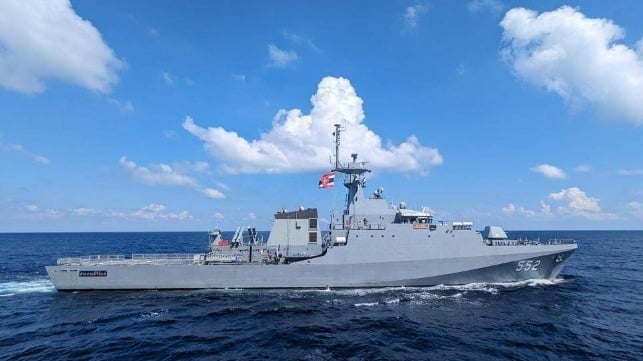Naval Dimensions of the Thai-Cambodian Conflict

A ceasefire encouraged by President Trump and agreed between Cambodia and Thailand on July 28 appears to be more or less holding, notwithstanding a series of small arms clashes.
The border battles between the two countries were largely focused on a forested national park area in Thailand’s Si Sa Ket province on the country’s southeastern border, with the focus of attention being the ownership of the Preah Vihear temple complex held by Thailand and claimed by Cambodia. The dispute reaches back to a treaty signed between Thailand and France in 1907, and inaccuracies in French map-making. But in modern times, the dispute has been overlaid by tensions between the prominent Shinawatra political and business dynasty in Thailand and the ruling Hun Sen family in Cambodia. Also featuring in the dispute has been Cambodia's sponsorship of casinos and scam factories in border areas, as well as the growing economic disparity between the two neighbors.
While the complexities of the dispute have little wider relevance, save that most ASEAN countries and the United States have lined up with Thailand whilst Cambodia initially relied on support from China, there is a maritime aspect to the dispute between the two countries.
As part of the Franco-Siam Treaty of 1907, Thailand took control of the Koh Kut and Koh Klang islands and the Khong Yai coastal strip in Trat province, to the east of the islands in the Gulf of Thailand, in exchange for surrendering the populous province of Battambong to France. Relatively undeveloped, Koh Kut has been described as a completely undisturbed tropical paradise. The Hun Sen family have reportedly been seeking to take control of Koh Kut to develop it as a prime potential tourist resort, as part of a secretive business arrangement with the Shinawatra family which has now been exposed - prompting widespread outrage in Bangkok.
Lt Gen Maly Socheata, until a few weeks ago a well-known cabaret singer but now mobilized as the Cambodian military spokeswoman, reported that the Thai navy had deployed first four and then a second set of four patrol boats to the Trat Province coastal area. She described this deployment as a provocation, but said that no fighting had taken place in the area.
The Royal Thai First Naval Area Command announced that it had indeed sent four patrol craft as reinforcements to the area, one of which was apparently the Krabi Class HTMS Prachuap Khiri Khan (P552). Royal Thai Marines then repelled a Cambodian infantry assault on July 26 at Ban Chamrack and at Ban Hat Lek at the southern end of the Khong Yai coastal strip, with 76mm fire support provided from the offshore Royal Thai Navy patrol craft helping to repel the attack.
The importance of Cambodia’s Gulf of Thailand coastline has grown in recent years. China has now completed construction of one of its five Project 141 Overseas Support Bases at Ream, within the Cambodian naval facility. The base, like other Project 141 facilities such as that at Djibouti, has a pier long enough to dock an aircraft carrier. China is also backing the construction of a ship canal from the Mekong at Phnom Penh to Kep on the Gulf of Thailand, which would allow the passage of large ships up the Mekong without the need to transit through Vietnamese territory, as is necessary at present.
As the ceasefire negotiations achieved no agreements over disputed territory, there is a danger that clashes will resume as each side attempts to reverse losses of territory and to consolidate gains made as the ceasefire went into force.
